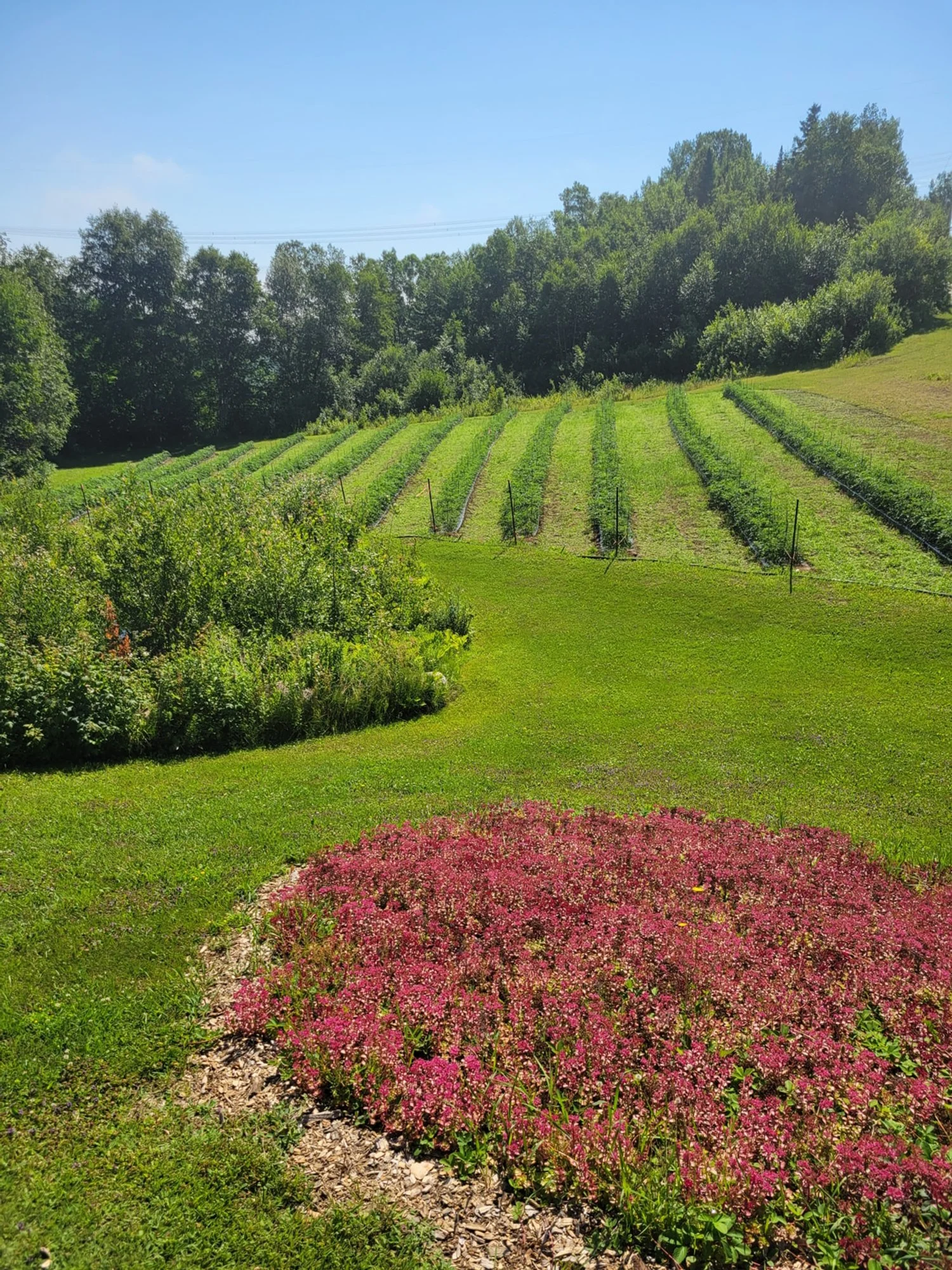Why We're Loving Omerto Tomato Wine
Omerto owners Lucie Hotte and and Pascal Miche
Since 2011 Pascal Miche has been crafting the most unusual wines, not from grapes, but from tomatoes. He and his wife and co-owner, Lucie Hotte operate their craft winery Omerto from their home in in Baie-Saint-Paul, Quebec. “We offer tasting of our four wines and our two (ready to drink) cocktails plus something new: an Omerto pate, and an Omerto mousse de foie for $15 (Canadian),” Hotte says. “[Visitors] can also watch a video about our story.”
Making Tomato Wine
Omerto fields in Québec
In Belgium, Pascal’s great-grandfather, Omer, had the initial idea of making tomato wine. And Pascal had the chance to know Omer until the age of 12, so he always promised his great grandfather that he would continue the project of making tomato wine. But Omerto wine was never commercialized in Belgium. Rather, it was first commercialized in Quebec, during 2011.
“It took 32 years of research and development to find good yeast for fermentation and the right tomato varieties,” Hotte says. “[And] crafting of our products has been protected as a trade secret in 32 countries. Omerto has a unique flavor that is not comparable to wine. It also has aromas and notes like some Xeres, Sake and Sauvignon.”
Boosted by the local microclimate and the influence of the Saint-Laurent (Saint Lawrence) River, the couple’s nearby tomato field incorporates 6,000 organic and heirloom plants. “The tomato is much more efficient than grapes,” Hotte says, “because you have 96% liquid and 4% solid [whereas] grapes have 60% liquid and 40% solid. And we need to produce our own tomato plants because of Québec regulation.”
Today, Omerto wines are 15 percent alcohol. SEC and Moelleux wines are available in 375 or 750 milliliter bottles, while Acacia wine and Cherry/Chestnut Cask (Moelleux) varieties may be purchased in 375 ml bottles.
Tomato Wine Tasting Notes
Omerto tomato wines
Each of the wines tastes best when served within a specific temperature range. They are delicious as an aperitif or digestive wine when served at 4-6 degrees Centigrade; or at 10-15 degrees when accompanying food and each wine also has its own, very distinct character.
Crafted with three varieties of heirloom tomatoes, Omerto Sec has a slightly golden color, and a flavor that accompanies smoked fish, oysters, sushi, delicatessen items, firm cheeses, or dark chocolate. especially well. Omerto Moelleux’s floral aromas of orange, honey melon, candied fruits and apricot complement the sweetness and acidity of the tomatoes while providing delicious counterpoint to foie gras, terrines, seafood, raw-milk cheeses, white or milk chocolate, and desserts.
‘Straw yellow’ semi-dry Omerto Acacia features citrus aromas, juxtaposed with woody and smoky aromas from the acacia cask in which it rests. With a resulting flavor reminiscent of aged cognacs, this Acacia wine pairs well with strong cheese, wild mushrooms, dark chocolate, and desserts.
The aroma of Omerto Cherry/Chestnut cask wine resembles rose petals combined with the woody/smoky scent of its cherry/chestnut cask. A perfect balance of residual sugar and natural tomato acidity, its flavor is like sherry. Foie gras and seafood, and chocolate desserts, plus blue, goat, or raw-milk cheese pair beautifully with this wine.
Production & Distribution
Omerto wines on display
Omerto produces 12,000 liters of naturally tannin-free wine per year or 120 hectolitres, which makes about 35,000, 375 or 750 ml bottles of wine. A Canadian address is required for shipping so the company ships products anywhere across Canada.
“We do not ship to the USA, because it is very complicated, and each state has its own regulations,” Hotte says. “We would also need a broker and a distributor, and it is pretty expensive. But in the next 3-5 years we would like to develop an Omerto franchise.” In the meantime, Miche and Hotte welcome visitors daily, from summertime through early fall. One- to two-hour guided tours (in English or French) introduce larger groups to the tomato wine-making process. Smaller tours are also available.




